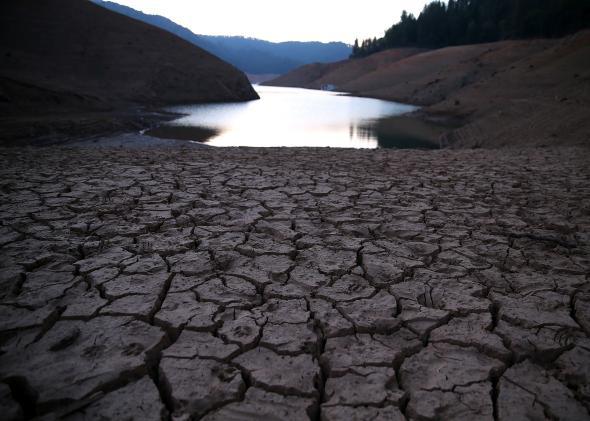The sprinklers were running so hard at a McDonald’s in Long Beach, California, recently that water was pooling up and running into the streets. A few employees, fed up with the wastefulness in the midst of a severe drought, reported the scene to the city.
Local ordinances restrict the amount of time businesses and residents can spend watering their lawns and what days and times they can use water for such purposes. But the Long Beach Water Department isn’t a spy agency. It doesn’t have the resources to conduct surveillance or stage sting operations to catch water wasters in the act. All it could do, explains director of operations Tai Tseng, was send letters to people and businesses accused of violating the rules and hope they changed their behavior. At least until Internet-connected water meters came into the picture.
Traditional water meters essentially provide a running tally of how much water a customer has used. Your bill is based on your current total, minus last month’s total. The utility has no idea how much water you actually use on a day-to-day basis, let alone what time of day you use the most water. But to enforce water restrictions, utilities need to know exactly that. The Long Beach Water Department is one of a small but growing number of utilities turning to electronic “smart” meters to solve the problem.
After employees reported McDonald’s for water usage violations, the Water Department installed a meter at the restaurant that reports water usage over the Web every five minutes. Not only did this provide the city with the proof it needed to fine the restaurant, it also provided McDonald’s with data it could use to clean up its act. Tseng says the restaurant ended up completely revamping its landscaping to use less water.
Many other cities face similar problems with monitoring wasted water, especially in California. Gov. Jerry Brown imposed mandatory water restrictions in the state earlier this year, and other states facing severe droughts may do the same. But actually enforcing those rules is hard. Often, the only consequence for water wasters is a stern letter. “Some customers have 40 or more violation reports,” he says. “Either they’re not getting the letters, or they’re ignoring them, or they have a hateful neighbor.”
Still, Long Beach doesn’t just use the smart meters to bust people who break the rules. Many people just want to use less water and want more immediate feedback on their usage than monthly water bills can provide. So as part of a pilot program, the Water Department also gave out around 200 smart water meters to residents. Tseng says the city believes they are having an impact.
No, smart water meters won’t solve the drought crisis. But they can help spot cases of extreme waste. For example, Tseng says one Long Beach resident was able to slash her water bill by about 98 percent after discovering a leak beneath the foundation of her home. Yes, those residential savings are small compared to the amount of water used by agricultural systems. But they do add up.
California utilities have rolled out smart meters en masse to monitor electricity usage, but smart water meters are still relatively rare. Tseng says that’s because most utilities think of smart meters as a way to avoid having to send people around the city to read meters, and the upfront cost of installing them is often too high to justify the money saved on the old-fashioned house-call method.
A deeper problem, Tseng says, is that water utilities simply aren’t technology companies. They don’t want to build data centers, install network infrastructure, or write code to process the data the meters send back.
Thankfully, meter makers themselves are starting to address those concerns. For its pilot program, Long Beach turned to a smart meter company called T2. The company’s meters are powered by batteries the company claims can last at least 10 years, saving utilities from having to run electricity to the meters. They communicate wirelessly over Verizon’s cellular data network, which means utilities don’t have to install network infrastructure. And the company provides a Web-based analytics service to both utilities and customers that allows them to visualize their water usage. The City of Long Beach didn’t need to write code, or even buy servers, since the whole thing is hosted on Microsoft’s Azure Cloud.
That was crucial for Long Beach, Tseng says, because the department only wanted to install water meters at a few locations where violations had been reported. “We didn’t want to install a massive infrastructure to target two percent of our customers,” he says.
Mark Shamley, vice president of operations at T2, says another big reason utilities have resisted smart meters is that historically it’s been in their best interest to let customers use as much water as they want. “If you’re telling your customers to save water, utilities are constricting their revenue,” he says.
But just as blackouts in the early 2000s led to the adoption of smart electric meters in California, droughts will likely encourage water utilities to adopt the technology. And as that happens, Shamley says the door will be open to new, more innovative uses of the data. “This is just the tip of the iceberg,” Shamley says. “Consumers are going to drive new applications.”
Also in Wired:
Up Close and Personal With the Fearsome New F-35 Jet
Training to Become the First Civilian Artist in Space
How Apple Is Going to Kill the Home Screen
